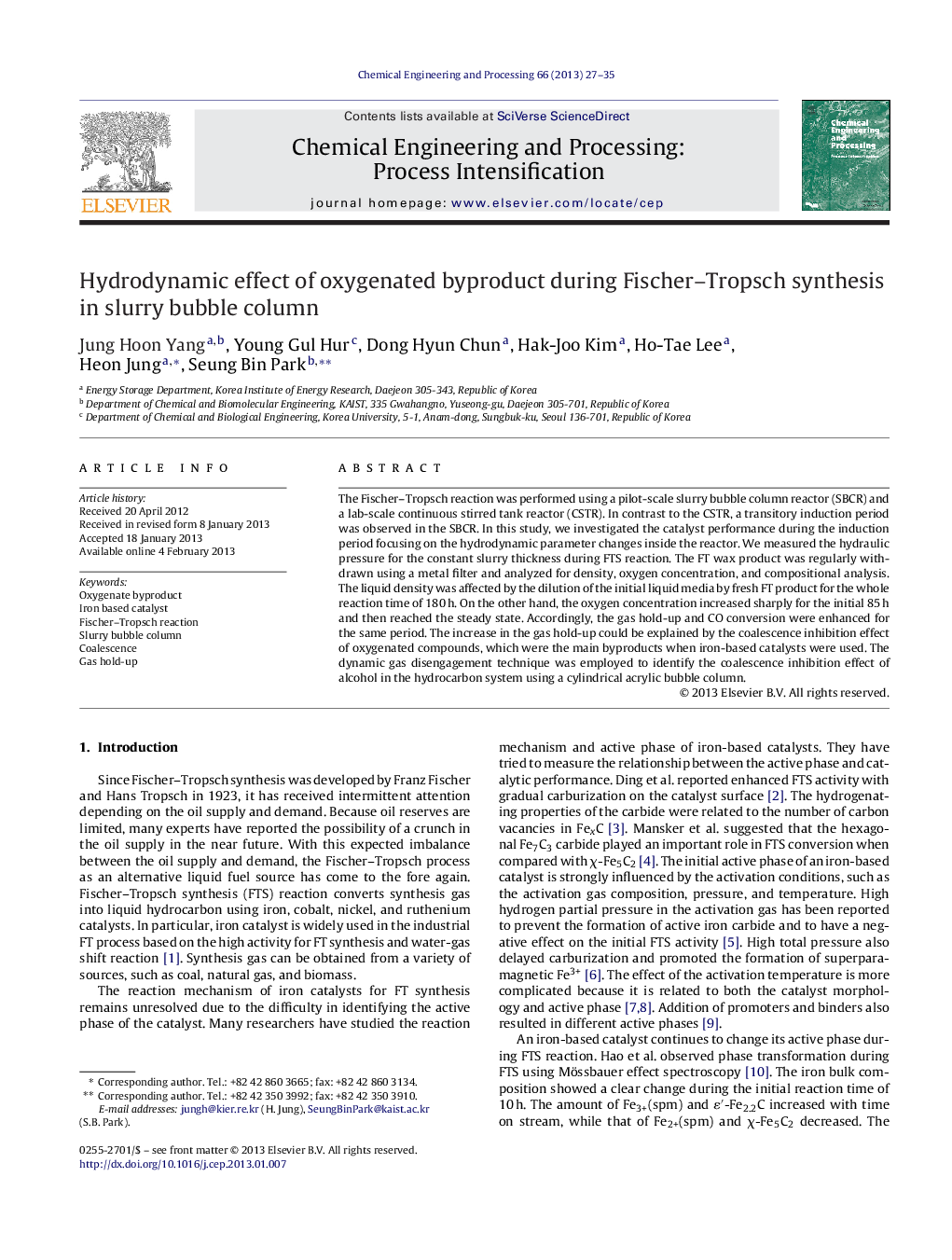| Article ID | Journal | Published Year | Pages | File Type |
|---|---|---|---|---|
| 687171 | Chemical Engineering and Processing: Process Intensification | 2013 | 9 Pages |
The Fischer–Tropsch reaction was performed using a pilot-scale slurry bubble column reactor (SBCR) and a lab-scale continuous stirred tank reactor (CSTR). In contrast to the CSTR, a transitory induction period was observed in the SBCR. In this study, we investigated the catalyst performance during the induction period focusing on the hydrodynamic parameter changes inside the reactor. We measured the hydraulic pressure for the constant slurry thickness during FTS reaction. The FT wax product was regularly withdrawn using a metal filter and analyzed for density, oxygen concentration, and compositional analysis. The liquid density was affected by the dilution of the initial liquid media by fresh FT product for the whole reaction time of 180 h. On the other hand, the oxygen concentration increased sharply for the initial 85 h and then reached the steady state. Accordingly, the gas hold-up and CO conversion were enhanced for the same period. The increase in the gas hold-up could be explained by the coalescence inhibition effect of oxygenated compounds, which were the main byproducts when iron-based catalysts were used. The dynamic gas disengagement technique was employed to identify the coalescence inhibition effect of alcohol in the hydrocarbon system using a cylindrical acrylic bubble column.
► In contrast to the CSTR, a transitory induction period is observed in the SBCR. ► We focus on the hydrodynamic parameter changes during FTS reaction. ► Gas hold-up increase sharply for the transitory induction period. ► The gas hold-up increase can be explained by the coalescence inhibition effect. ► Oxygenated byproducts during FTS reaction prevent the generation of large bubbles.
